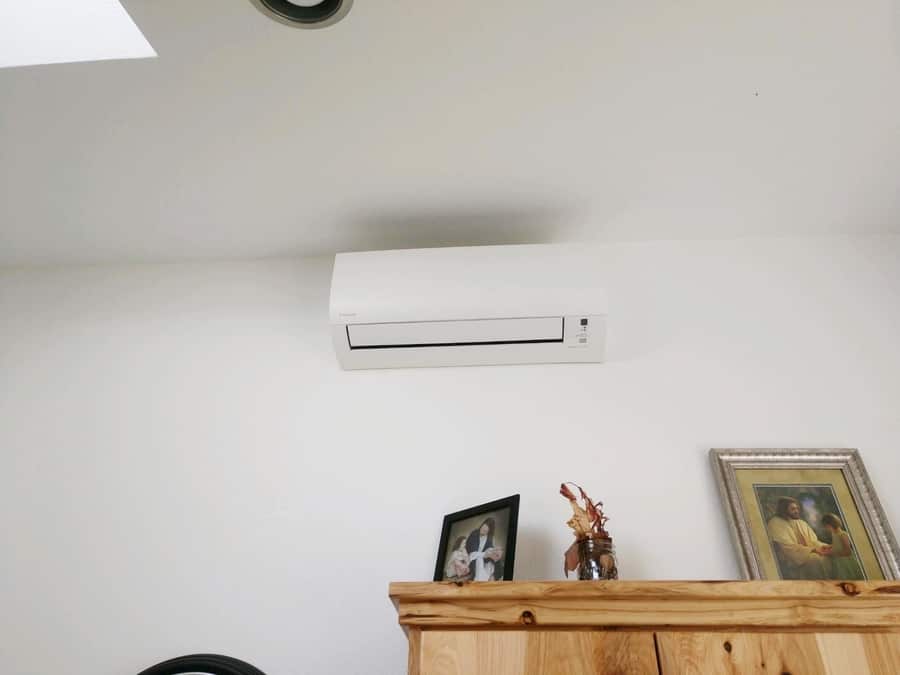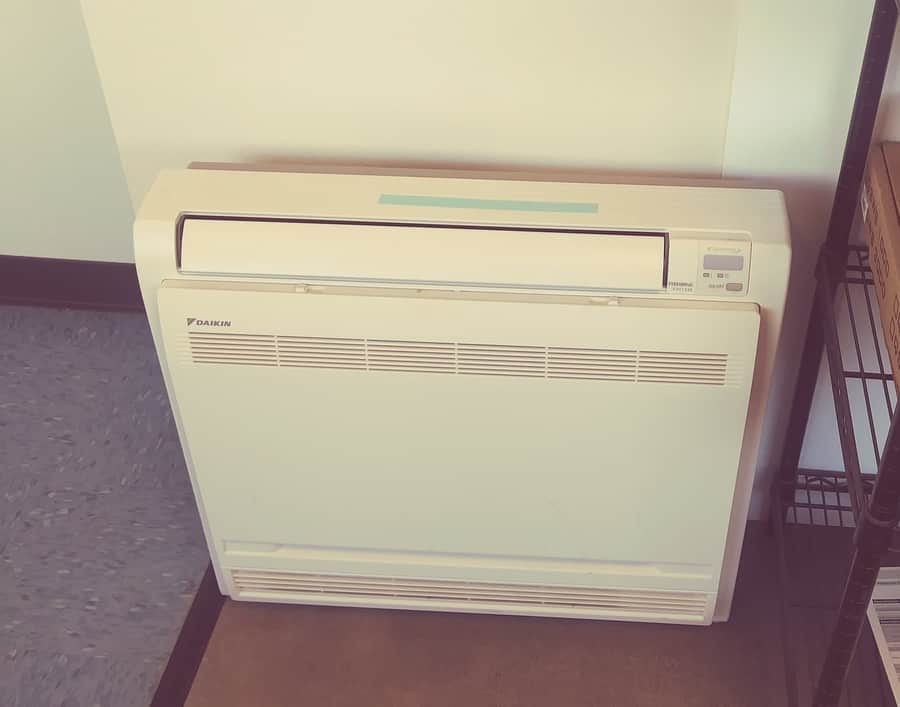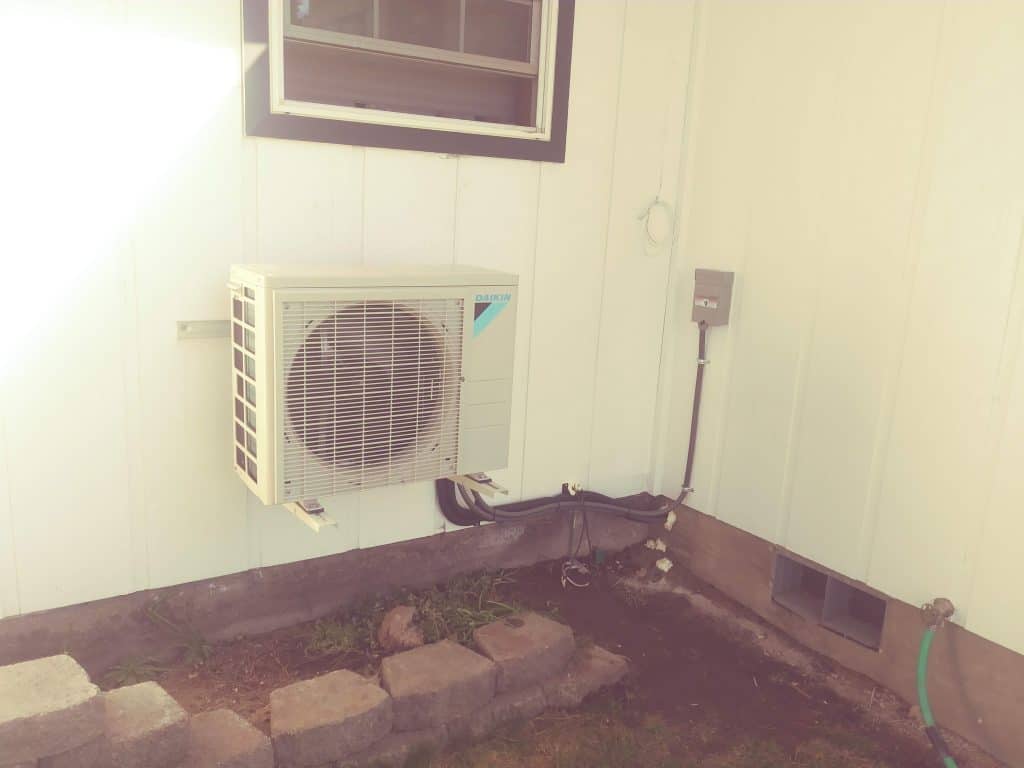Ductless heat pumps and air conditioners work by the same principles as ducted systems. An outdoor compressor unit and an indoor air handler (head) to move the air. Ductless systems generally need a separate head for each area or room.
For example, Daikin ductless HVAC systems can handle up to as many as eight zones or indoor units.
Most motel rooms have what they call a package terminal unit. The compressor and coils with fans are all in the same unit. Ductless systems divide the compressor and one coil into an outside unit which aids in the noise level
Ductless units are among the quietest systems on the market.
It may even be appropriate to use two separate outdoor units to supply conditioned air to different areas. The combinations are enormous. Best to consult with more than one company to get opinions.
You can buy either a ductless heat pump or an AC only unit. I’m sure there are applications where cooling only would be advantageous in that the AC only unit would cost less that an heat pump and heating is not a priority.
Both the AC only and the heat pump mini splits work on the same principles as the bigger brothers in the ducted system versions.
Heat pumps and air conditioners have a compressor and coils with fans that move air to move heat either in one direction or the other to heat or cool your home.
The medium with which they move heat is refrigerant. Most people are familiar with refrigerant being called Freon. Freon is a brand name like Kleenex.
Mini split systems will come from the factory with the refrigerant charge contained in the new outdoor unit.

As soon as the outdoor unit is connected properly to the indoor head the refrigerant valves in the outdoor unit are opened releasing the refrigerant into the entire system.
This is where a professional is necessary because the connecting process is critical to the long life of a refrigeration system.
Some of you may have have heard of the type of refrigerant called R-22 or R-12. In 1987 the United States participated in an international treaty that restricted the production of hyrdochlorofluorocarbons or HCFCs of which included R-22 and R-12.
The controversy being that R-22 and R-12 have been damaging our planet’s ozone layer. New systems are charged with a more earth friendly R-410A refrigerant.
R-410A boils at -53.3 degrees Fahrenheit.
Depending on your age you may remember that hair spray and most aerosol cans contents were pressurized or propelled by refrigerants. R-12 was a very common propellant for such uses.
Do you recall hearing or seeing R-12 being used? It’s what most automobile air conditioners were charged with.
A lot of old car guys like myself miss the stronger cooling ability of R-12.
R-12 has a boiling point of -21.46 degrees Fahrenheit or 29.8 Celsius. So unlike water that boils at 212 degrees Fahrenheit, refrigerants boil at a very cold temperature.
With R-12 as a propellant for hair spray you could put your hand in front of the spray and it would be super cold. When the contents of the hair spay are release into the atmosphere from the can the refrigerant vaporizes or flashes.
This same reaction is happening inside an air conditioning system. A compressor pumps refrigerant into a high pressure against a metering device inside the piping that connects the compressor to fan coils. Fan coils are like radiators in a car.
The fan in your car and the movement of your car moves air through the radiator and removes the heat created by the friction in the cars motor.
When your home air conditioner or heat pump is in the cooling mode, a fan moves air over the coil in the outdoor unit and removes the heat created by the compressor.
The somewhat cooler refrigerant then passes down the refrigeration piping to a metering device that is actually creating the pressure point that the compressor is pumping against.
As soon as the refrigerant can squeeze through the metering device if flashes. The same as the R-12 from the can of hair spray. Instantly boiling at the temperature relative to the type of refrigerant in the system.
Why Choose A Ductless Mini Split?
Several reasons pop into mind as I consider why a ductless heat pumps or air conditioners would be a good or bad choice.
If you already have a ducted system and the integrity of the duct work is satisfactory then adding or replacing equipment to that system would be comparable in cost or even less than an equal heating or cooling system created by a ductless system.
For every head you add in a ductless system the cost goes up dramatically.

I’ve listened to some who say I wouldn’t have one of those things on my wall, while others are more appreciative of the cost effectiveness and the silent running of these mini split systems
For houses that have no duct work the idea of using ductless systems becomes a lot more reasonable. Duct work is labor intensive and mini splits are not. Backup heat will generally be required to supplement the installation of a mini split because of their inability to create heat at extremely low outdoor temperatures.
This supplemental heat can be simply electric wall heaters.
Two very important details to consider when deciding which ductless heat pump is best are how long is the warranty and at what outside temperature will it still produce heat.
Ductless heating systems are also a very effective way to heat and cool additions to homes. Adding a new room to a home can be more than an existing heating and cooling system can handle.
Being a separate system also can add better control and more comfort just like a zoning system. Zoning systems provide individual control to single split systems so individual areas of a home can be set at different temperatures. Like having cooler bedrooms or unused rooms.
Conclusion
Ductless heat pumps are one of the most efficient heating systems for the price. Included with that efficiency is the noise level, they are very quiet.
One of the cons that I hear the most is in regards to aesthetics. My wife will not even budge on the looks of having one of those units hanging on the inside of her house. But, she has relented on the mother-in-law apartment to help eliminate the lack of control when it’s occupied.
Another option is a floor unit pictured below.

If your installation is for new construction then discuss with your installer the possibility of having the refrigeration lines inside the walls to eliminate the unsightly use of the lines being exposed on the outside of the house.
They can be covered, but still an eyesore when you don’t like the thought of things drooping down the outside of your home. Kind of like the cable guy lacing cable all over the siding.

